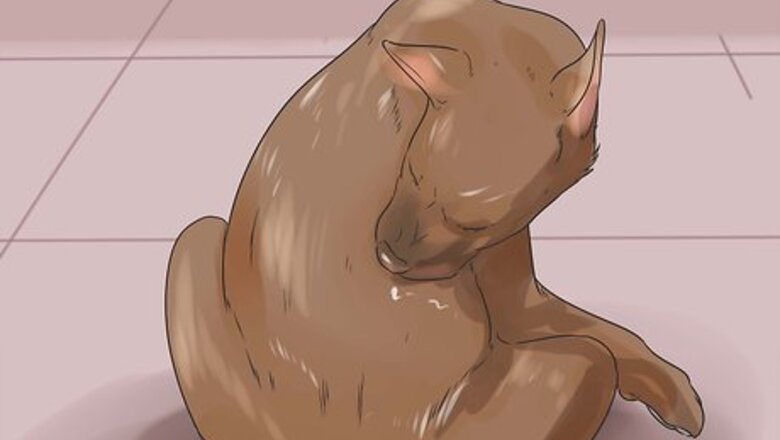
views
X
Research source
Hot spots can be painful for dogs and can become very large quite quickly. It is important to seek prompt and adequate treatment if you notice a hot spot on your dog.[2]
X
Research source
- Hot spots are red, inflamed patches of skin that may ooze pus and feel moist and sticky. Your dog may lose fur around the area.
- Once you start treating the hot spot, it should dry out and develop a scab.
- Eventually, the scab will fall off and expose healthy skin underneath.
Identifying Hot Spots
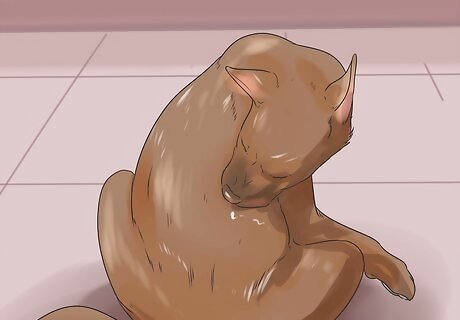
Watch your dog. Notice if your dog scratches or licks a particular spot constantly. This is usually a sign that he is suffering from some sort of skin irritation.
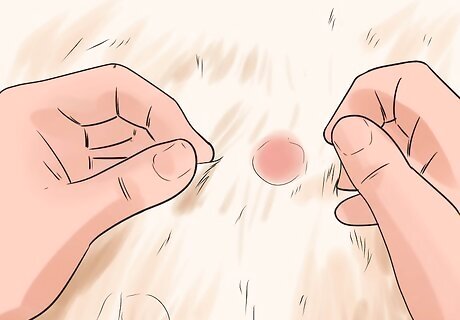
Part and inspect your dog's fur. Examine more closely the problem area you have identified. Hot spots can be difficult to see with the naked eye because they tend to spread under the cover of the dog's fur. Usually by the time you notice them, hot spots are well established and growing rapidly.
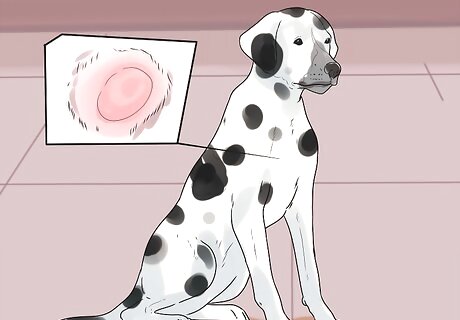
Identify that you are dealing with a hot spot. Hot spots are red, moist, hot and irritated rashes. Other identifiers of hot spots include discharge and an unpleasant odor. Hot spots are commonly found on a dog's head, hip or chest area, but they can be found pretty much anywhere. Dogs with long hair and thick coats are most commonly affected. Dogs who are not groomed regularly and have matted coats are also prone to developing hot spots, as are dogs who swim or are frequently in the rain. Dogs with hip dysplasia or anal sac disease are also more likely to suffer from hot spots because they tend to lick the skin on their hind end.
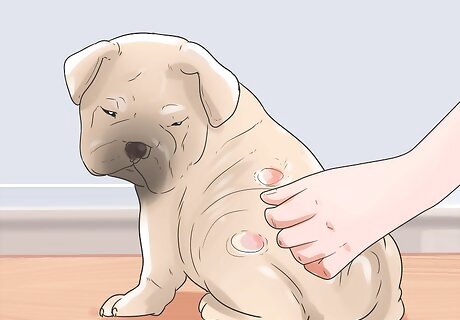
Check areas surrounding the hot spot. If you do identify a hot spot, take some time to carefully check the rest of the dog’s skin. Part the fur in the area surrounding the hot spot and examine for any other moist or reddened areas. All spots need to be treated immediately and, if possible, you should try to ascertain the underlying cause of the hot spot (flea bite, scratch, allergy, etc.).
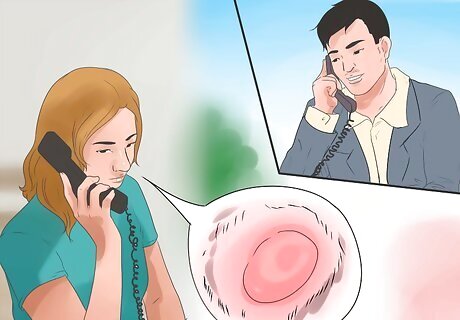
Contact your vet. If this is your dog's first hot spot, seeing a vet is crucial. Your vet can give you an accurate diagnosis and develop an appropriate treatment plan.
Cleaning the Affected Area
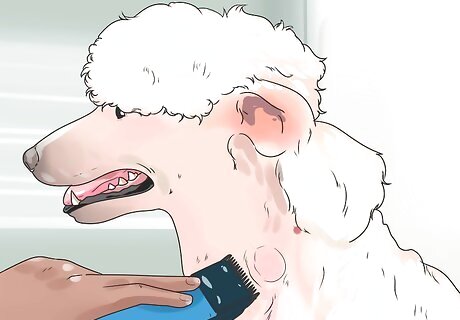
Trim or clip the hair from the surface of the hot spot. Exposing the hot spot to air will dry out the moisture and help speed up the healing process. Be careful not to pull the hair, irritate the skin or cut your dog's skin. Disinfect your scissors or clippers before clipping. In cases where there is a lot of discharge emerging from the hot spot, you will need to clean your clippers frequently while removing hair. Otherwise, the clippers will become plugged with debris. Remember to clean and disinfect the instrument after use. Have your dog sit or lie down for this process. Get a second person if you need help keeping the dog still. To avoid accidentally cutting your dog's skin, don't cut too close to the skin itself and instead leave a quarter inch of stubble. If the affected area is too large, shave it.
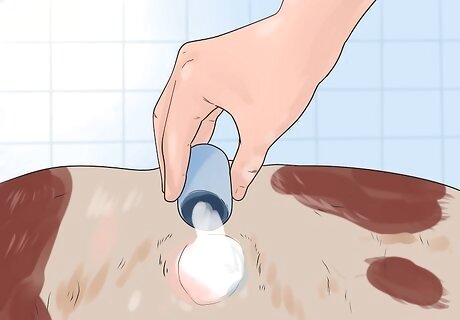
Clean the wound. Use an antimicrobial shampoo that you can purchase at a vet's office or a pharmacy for humans. A good product will contain chlorhexidine as an ingredient. You can also clean the area with a mild, water-based astringent or antiseptic spray. Consult your veterinarian before use of any product on a hot spot.
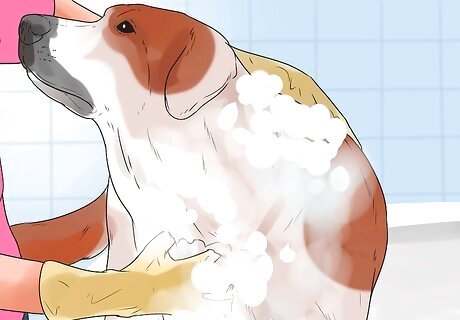
Leave the antimicrobial shampoo on the dog for 10 minutes. This will allow the medication in the shampoo to settle into the affected area and begin working. Rinse thoroughly after 10 minutes and dry the affected area completely. If using an alternative solution, read and follow the accompanying instructions on how to apply.
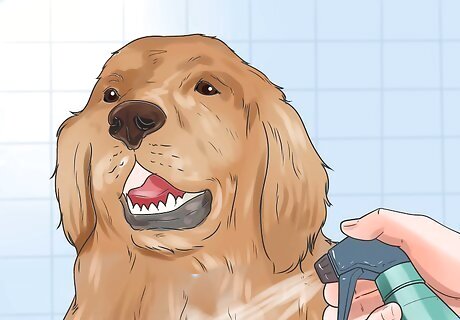
Apply an antibiotic ointment or spray. Your vet will usually prescribe a topical medication, such as a Gentamicin or Betamethasone spray. Your vet may also recommend oral antibiotics, depending on the situation. You can apply an antibiotic treatment on the wound up to three times per day.
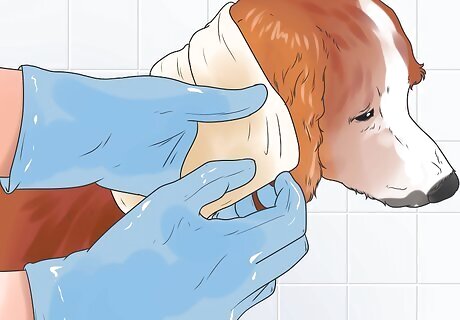
Keep the area dry. The air will help the wound heal more effectively, whereas more moisture will facilitate the wound's growth. Keep in mind that hot spots can't be covered with a bandage because this traps moisture in and thereby worsens the wound.
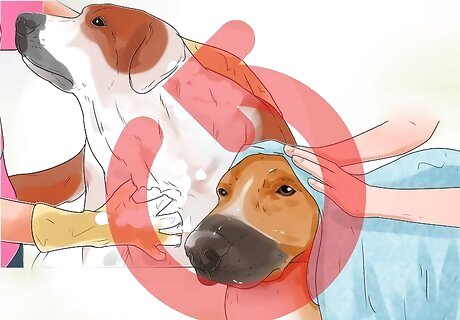
Inspect the wound twice daily. If there is a buildup of discharge, repeat the shampoo process (shampoo, rinse, dry) to keep the wound clean.
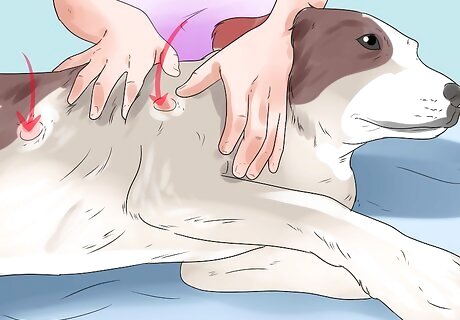
Check the dog’s entire body for any new or developing hot spots. This check should be done daily, particularly if it is hot or humid out.
Preventing Further Injury
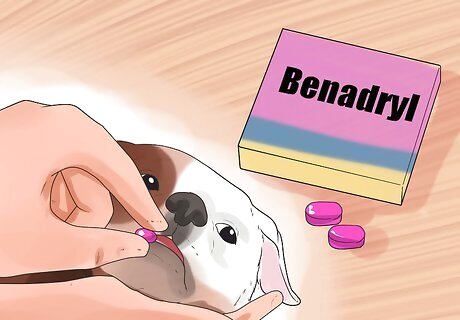
Stop the itch with an antibiotic. The best way to relieve itching is with an antibiotic prescribed by your vet. Your vet may prescribe a cream antibiotic that is applied directly to the skin in order to quickly and directly relieve the itching. Hydrocortisone spray can help reduce the irritation, but should not be used long term. Antihistamines such as Benadryl may also provide some relief. The appropriate dosage is 1 tablet per 50 pounds. Avoid putting creams intended for humans onto your dog's skin, as this can make matters worse. Creams keep moisture in the area, and the spot needs to dry completely before it can heal.
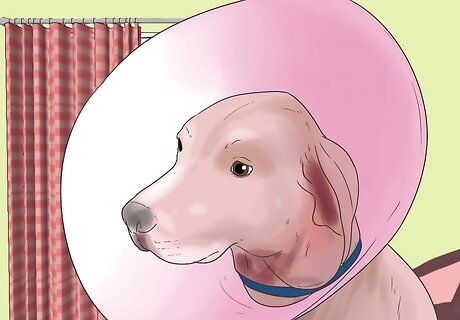
Use an Elizabethan collar if your dog keeps licking or biting the lesions. The cone-shaped collar will restrain your dog's reach, making him unable to further irritate the wound. An Elizabethan collar should not be used as the sole means of treatment for hot spots. Collars don't treat the hot spots but prevent your dog from making the lesions more severe. Untreated lesions will only grow and become more serious, in addition to being painful for your dog. You can wrap a sock around one of the dog's rear feet and tape it into place if the hot spot can be scratched by a rear foot. EXPERT TIP Ray Spragley, DVM Ray Spragley, DVM Veterinarian Dr. Ray Spragley is a Doctor of Veterinary Medicine and the Owner/Founder of Zen Dog Veterinary Care PLLC in New York. With experience in multiple institutions and private practices, Dr. Spragley’s specializations and interests include non-surgical management of cranial cruciate ligament tears, Intervertebral Disk Disease(IVDD), and pain management in osteoarthritis. Dr. Spragley holds a BS in Biology from SUNY Albany and has a Doctor of Veterinary Medicine degree (DVM) from Ross University School of Veterinary Medicine. He is also a Certified Canine Rehabilitation Therapist (CCRT) through the Canine Rehab Institute as well as a Certified Veterinary Acupuncturist (CVA) through Chi University. Ray Spragley, DVM Ray Spragley, DVM Veterinarian Deter dogs from licking their wounds. Skin rashes, hot spots, and intertrigo won't properly heal if dogs lick, bite, and scratch them, introducing more bacteria into already inflamed areas. Use an Elizabethan collar to prevent interference so that topical ointments and medications can fully clear up the irritated skin.
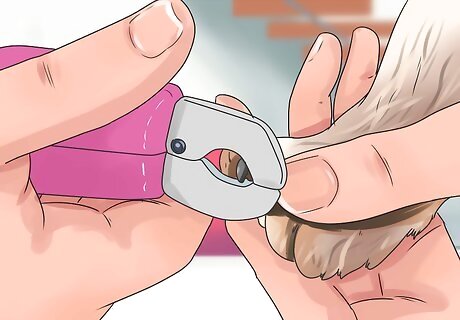
Trim your dog's toenails. This keeps your dog from having a ready way to scratch the area and spread the infected discharge.












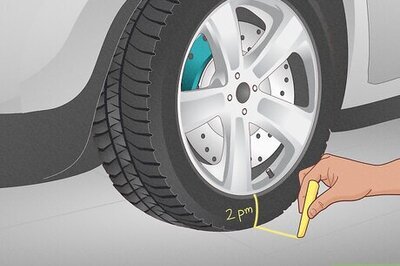





Comments
0 comment